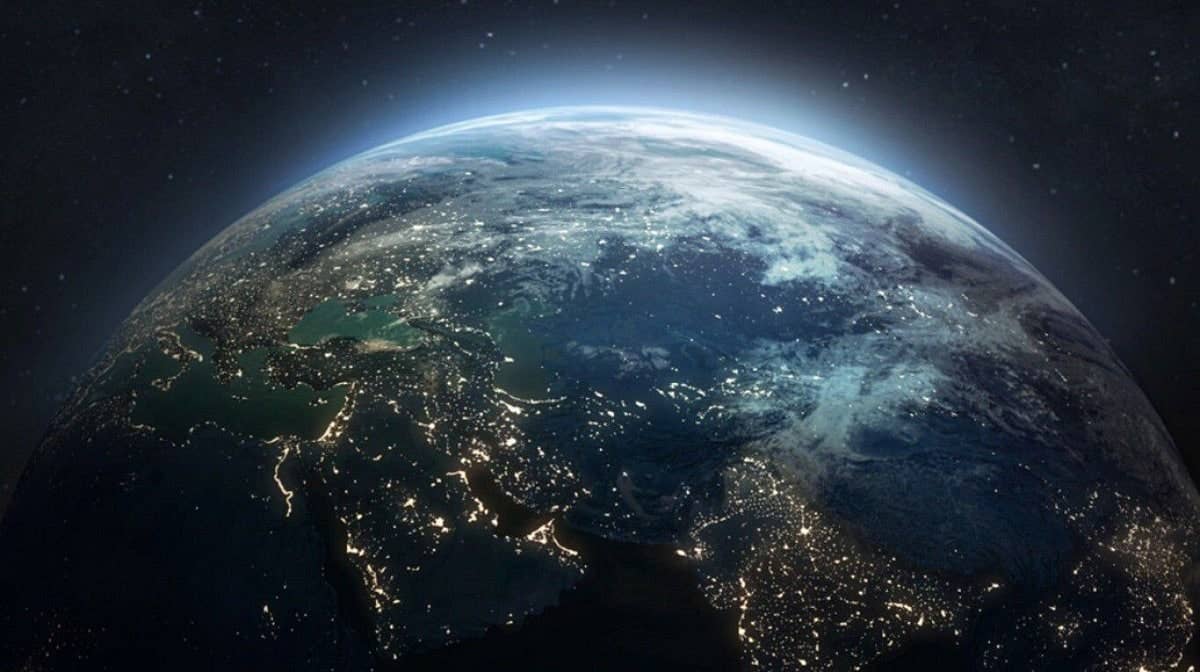The rise of oxygen on Earth linked to planetary rotation
Earth’s longer days boosted oxygen production by ancient microbes, shaping atmospheric changes and supporting the evolution of life.

Earth’s longer days boosted oxygen production by ancient microbes, shaping atmospheric changes and supporting the evolution of life. (CREDIT: CC BY-SA 4.0)
The story of Earth’s atmospheric oxygenation is one of transformation, shaped by both biological and planetary forces. While scientists have long debated the causes behind the stepwise rise of oxygen, a new perspective ties the process to changes in Earth’s rotation.
This insight suggests that the length of a day may have significantly influenced the oxygen output of photosynthetic microorganisms, leading to pivotal increases in atmospheric oxygen.
Oxygenation and the Role of Day Length
For much of Earth’s history, oxygen was scarce, existing only in trace amounts. The planet’s atmosphere began to change around 2.4 billion years ago during the Great Oxidation Event (GOE). This was followed by the Neoproterozoic Oxygenation Event (NOE) roughly 600 million years ago. Both events marked significant increases in atmospheric oxygen, setting the stage for the evolution of complex life.
Central to these changes were photosynthetic cyanobacteria, which release oxygen as a byproduct of capturing sunlight to produce organic compounds. However, new research suggests that the length of the day played a crucial role in determining how much oxygen these microorganisms could produce and release into the atmosphere.
Earth’s rotation has slowed over billions of years due to tidal friction caused by the moon’s gravitational pull. Early in its history, the planet spun much faster, resulting in days as short as six hours. As rotation slowed, day length increased, altering the dynamics of sunlight exposure for cyanobacterial mats that populated ancient seas and land surfaces.
Investigating Ancient Microbial Ecosystems
To explore this link, researchers studied modern microbial communities in extreme environments, such as the Middle Island Sinkhole in Lake Huron. This submerged sinkhole—characterized by low oxygen, high sulfur, and microbial mats similar to those of ancient Earth—offered a unique opportunity to examine how changing environmental conditions affect oxygen production.
Related Stories
“An enduring question in the Earth sciences has been how Earth’s atmosphere got its oxygen and what factors controlled this process,” said Gregory Dick, a geomicrobiologist involved in the study.
The team’s findings reveal that longer days significantly increased oxygen release from photosynthetic microbes, pointing to a previously unconsidered connection between day length and Earth’s oxygenation history.
The researchers simulated the effects of Earth’s rotational deceleration using models and laboratory experiments. They found that longer days extend the period of high sunlight in the afternoon, enabling cyanobacteria to produce and export more oxygen.
This extended period of oxygen production reduces the dominance of competing sulfur-oxidizing bacteria, which block sunlight during shorter days, further enhancing oxygen output.
Linking Day Length to Oxygenation Events
Judith Klatt of the Max Planck Institute for Marine Microbiology and Arjun Chennu of the Leibniz Centre for Tropical Marine Research led the modeling studies. Their work demonstrated that the interplay of sunlight, metabolic processes, and oxygen transport fundamentally changes with day length.
“Simply speaking, there is just less time for the oxygen to leave the mat in shorter days,” Klatt explained. This delay in oxygen escape is critical because oxygen gradients within microbial mats steepen over longer days, boosting oxygen fluxes upward and into the atmosphere.
The researchers hypothesized that this day-length-driven increase in oxygen export likely contributed to the stepwise pattern of oxygenation observed in Earth’s history. By enhancing the burial of organic carbon, longer days helped stabilize oxygen levels and prevented its rapid consumption by microbial respiration.
The implications of this research extend beyond Earth’s early atmosphere. The findings highlight the interconnectedness of planetary mechanics and biological processes, suggesting that even subtle changes in a planet’s rotation could influence its habitability.
Earth’s present-day 24-hour rotation is a far cry from its early state, where days were short and dynamic. Over billions of years, the moon’s gravitational pull has slowed Earth’s rotation, creating longer days that allowed cyanobacteria to flourish. This gradual change helped shape the planet’s oxygen-rich environment, ultimately paving the way for multicellular life.
“Our research suggests that the rate at which the Earth is spinning may have had an important effect on the pattern and timing of Earth’s oxygenation,” Dick noted. The study offers a new lens through which to examine Earth’s past, emphasizing the role of physical forces in driving biological evolution.
At the Middle Island Sinkhole, the interplay of photosynthetic and sulfur-oxidizing microbes offers a glimpse into ancient ecosystems. These modern analogs show how competition and cooperation among microorganisms can influence global processes.
As sulfur-oxidizing bacteria migrate to block sunlight, cyanobacteria adapt by increasing oxygen production during peak sunlight hours, illustrating the resilience of these ancient life forms.
Future Directions
This research opens new avenues for understanding planetary habitability. The stepwise oxygenation of Earth’s atmosphere is a key factor in the emergence of complex life, and the role of day length provides a critical piece of this puzzle. By linking Earth’s rotational dynamics to its oxygenation history, scientists gain deeper insights into how life and planetary systems co-evolve.
Further studies could explore how similar processes might operate on other planets with different rotation rates. The connection between day length and photosynthesis has implications for astrobiology, particularly in the search for habitable worlds beyond our solar system.
This groundbreaking work underscores the importance of interdisciplinary approaches in Earth sciences. By combining insights from biology, geology, and physics, researchers are uncovering the complex interactions that have shaped our planet’s history and its capacity to support life.
Note: Materials provided above by The Brighter Side of News. Content may be edited for style and length.
Like these kind of feel good stories? Get The Brighter Side of News' newsletter.
Joseph Shavit
Head Science News Writer | Communicating Innovation & Discovery
Based in Los Angeles, Joseph Shavit is an accomplished science journalist, head science news writer and co-founder at The Brighter Side of News, where he translates cutting-edge discoveries into compelling stories for a broad audience. With a strong background spanning science, business, product management, media leadership, and entrepreneurship, Joseph brings a unique perspective to science communication. His expertise allows him to uncover the intersection of technological advancements and market potential, shedding light on how groundbreaking research evolves into transformative products and industries.



